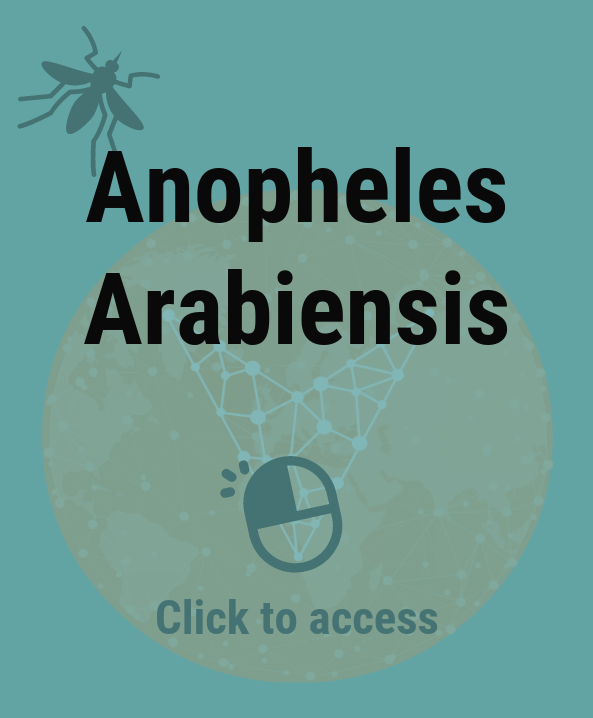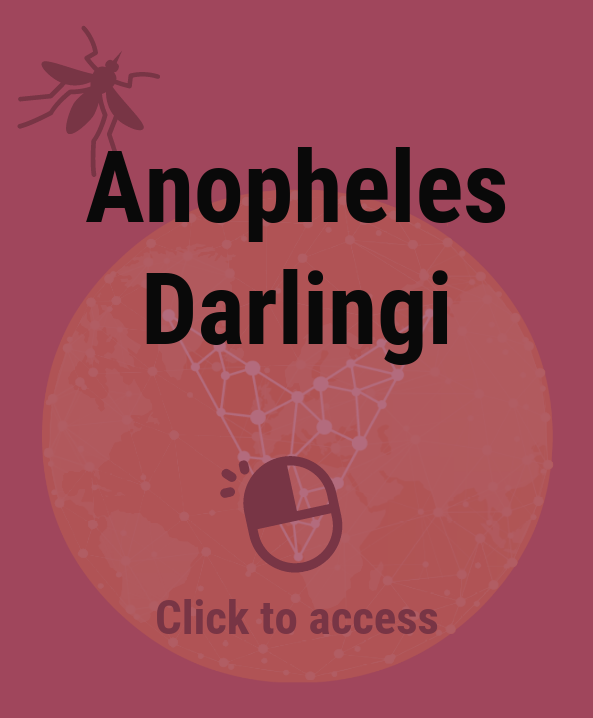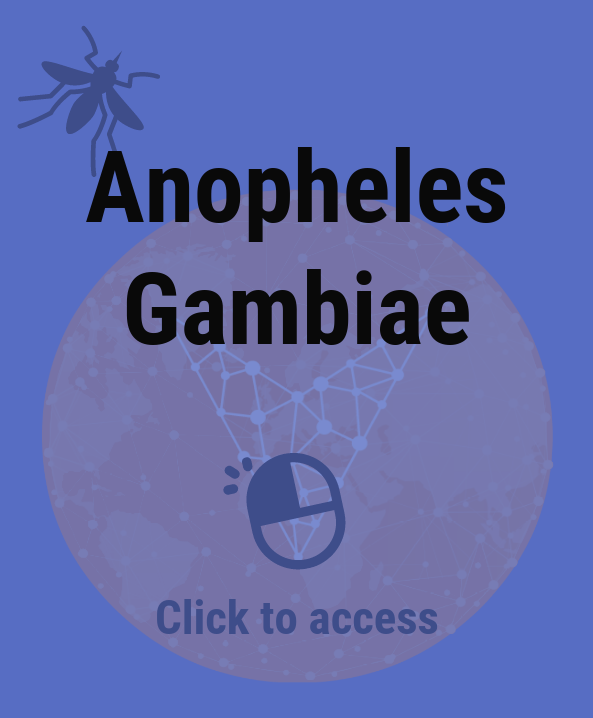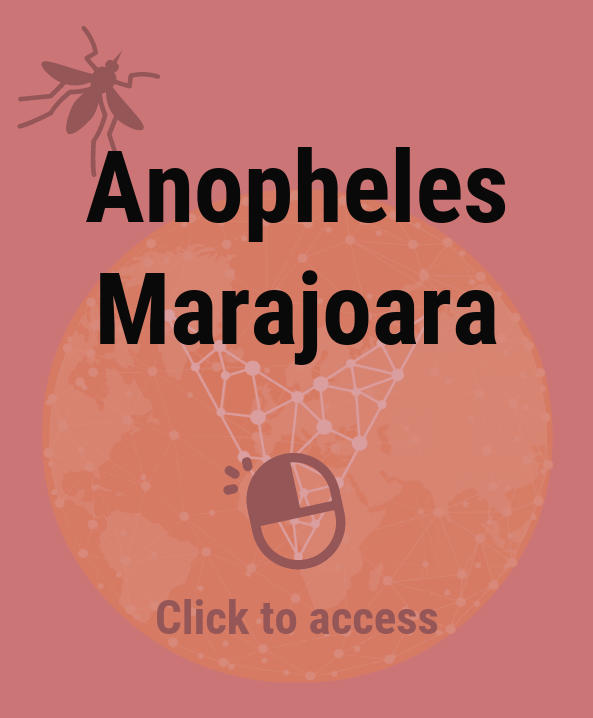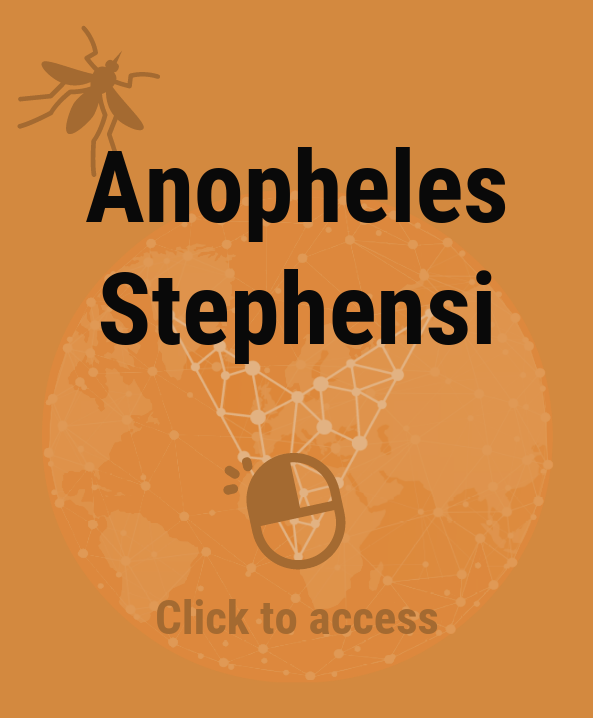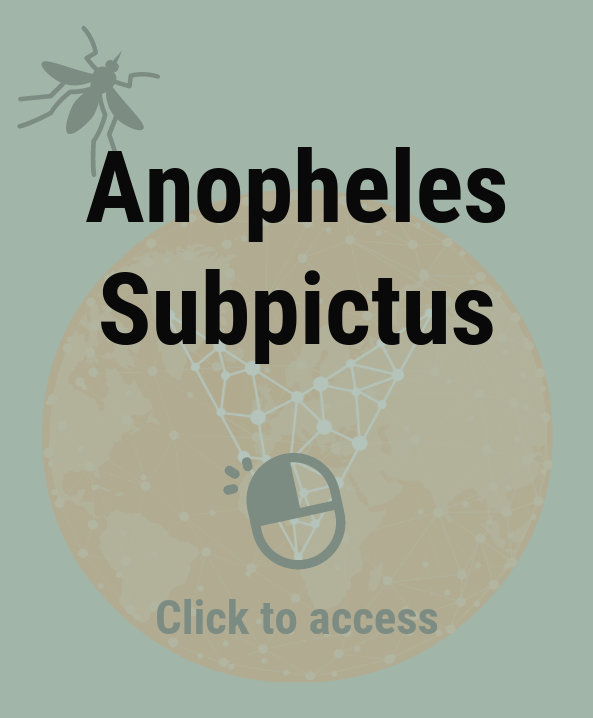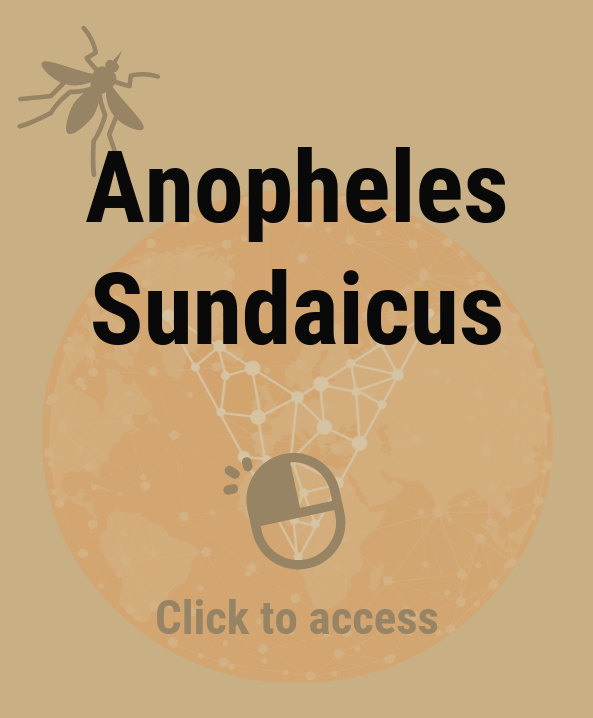
Anopheles mosquitoes are primarily known for their importance in the transmission of human malaria. Of the more than 450 recognised Anopheles species, around 40 have the capacity to transmit human malaria parasites well enough to cause significant human illness[1]. Those species that are effective vectors have a preference for feeding on humans rather than other animals, are able to survive and breed in places close to homes, and can survive long enough after feeding on infected blood to allow the parasite time to develop and travel to the mosquito’s salivary glands ready to infect the next person bitten.
Biology
Like all mosquitoes, anophelines go through four stages in their life cycle: egg, larva, pupa, and adult.
Adult females lay 50-200 eggs per oviposition, each placed singly onto water with a small floats on either side. These eggs are not resistant to drying, and typically hatch within 2-3 days[2].
The egg, larval and pupal stages are aquatic and last 5-14 days. When the adult ecloses it may live up to a month, but most do not live more than 1-2 weeks. Adults usually mate within a few days after emerging from the pupal stage. In most species, the males form large swarms, usually around dusk, and the females fly into the swarms to mate[2].
Habitat
Anopheles mosquitoes breed in natural water collections, so breeding increases dramatically in the rainy season when water collects in man-made containers, ponds, water tanks, paddy fields and other places that can serve as breeding grounds. Some species, such as An. coluzzii, are more commonly found in puddles, swamps and ditches, while others, including An. gambiae (s.s.) are more frequent in drains, construction sites, and others habitats[3].
Distribution
Anopheles mosquito are found throughout the tropics and sub-tropics. In Africa, a small number of highly dominant malaria vector species cover large areas. Anopheles fenestus and An. gambiae are distributed across central Africa, and these species are found along with An. arabiensis in sub-Saharan West Africa. In South America, An. darlingi is considered to be the most important of the dominant vector species. In Asia there are many dominant vector species, including An. dirus, An. minimus and An. punctulatus, and this complexity increases the problems associated with understanding the vector/transmission environment[4].
Biting Behaviours
Most Anopheles mosquitoes are crepuscular (active at dusk or dawn) or nocturnal (active at night), which is why bed nets are such an effective tool for malaria prevention. However, whilst some Anopheles mosquitoes feed indoors (endophagic), others have a preference for feeding outdoors (exophagic). Similarly, some Anopheles mosquitoes prefer to rest indoors (endophilic), while others prefer to rest outdoors (exophilic)[2]. There is evidence of changes in biting and resting behaviour of the main malaria vectors as a result of selective pressures by the widespread and long-term use of bed nets and indoor residual spraying[5].
References
- Malaria Atlas Project. Mosquito Malaria Vectors. 2019. Available at
https://map.ox.ac.uk/mosquito-malaria-vectors/ - Centers for Disease Control and Prevention. Malaria: Biology: Anopheles Mosquitoes. November 2018. Available at https://www.cdc.gov/mosquitoes/about/life-cycle-of-anopheles-mosquitoes.html#:~:text=Anopheles%2C%20the%20mosquitoes%20that%20spread,200%20eggs%20at%20a%20time.
- Mattah PA, Futagbi G, Amekudzi LK, Mattah MM, de Souza DK, Kartey-Attipoe WD, Bimi L, Wilson MD. Diversity in breeding sites and distribution of Anopheles mosquitoes in selected urban areas of southern Ghana. Parasites & vectors. 2017 Dec;10(1):25.
https://parasitesandvectors.biomedcentral.com/articles/10.1186/s13071-016-1941-3 - Sinka ME. Global distribution of the dominant vector species of malaria. InAnopheles mosquitoes-New insights into malaria vectors 2013 Jul 24. IntechOpen.
https://www.intechopen.com/books/anopheles-mosquitoes-new-insights-into-malaria-vectors/global-distribution-of-the-dominant-vector-species-of-malaria - Ferreira CP, Lyra SP, Azevedo F, Greenhalgh D, Massad E. Modelling the impact of the long-term use of insecticide-treated bed nets on Anopheles mosquito biting time. Malaria journal. 2017 Dec;16(1):373.
https://malariajournal.biomedcentral.com/articles/10.1186/s12936-017-2014-6
